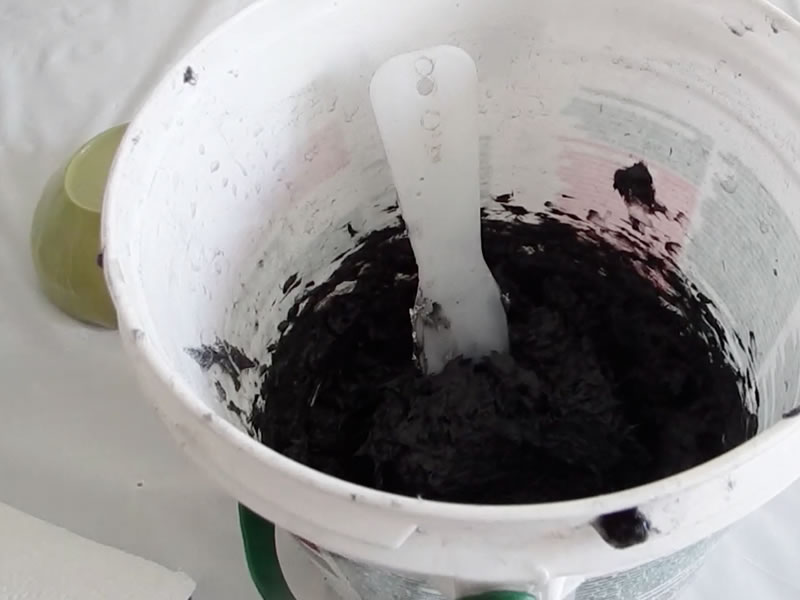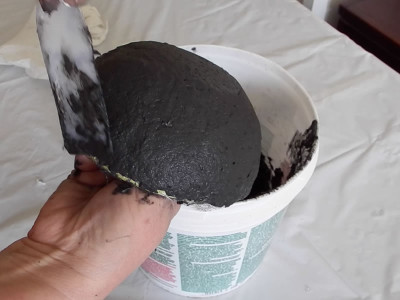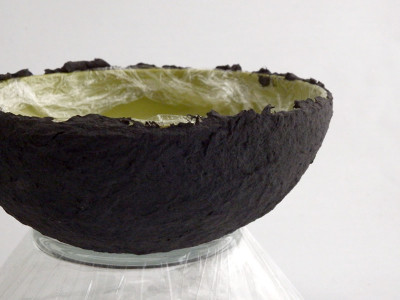
I’ve been waiting for the weather to be warm and dry to seal my papier maché clay bowls and put them in the ChirpHop Studio Etsy shop. It’s been either warm or dry, but not both.
In the meantime, the notion of changing the color of the clay got into my head. If it was built into the bowl material, rather than applied to the surface, I could save some steps. Applying paint also sometimes has a “fake” look, almost like the bowl is made of molded plastic.
The idea of black paper clay has been spinning around in the background for awhile, but with the new papier maché clay recipe, I was concerned that the joint compound would make it a dark gray. That could be interesting, and I’ll try it sometime, but I wanted as close to black as I could.

I wasn’t worried about the glue, since it dries clear.
For some reason, the flour didn’t seem like it would make a big difference, either.
It occurred to me that if I added some black acrylic paint to the joint compound, that might do the trick, or at least make it significantly darker… and it did. Only a small amount of paint was needed to really affect the clay mixture, as you can see in the photos.
I started by using only black paper, including some tissue paper, which is one of the few types of paper that will actually color the mixture, rather than blending with everything else to make gray.
There was also a sizable amount of an old recycled black notepad meant for gel pens, which was like a slightly finer construction paper.

The next unknown was whether it would fade when it dried.
I left it out for two days and it didn’t lose any of its depth of color!
If I want a smooth texture, it’s nice to know I can sand it and the color will be consistent all the way through the bowl.
An experimental half recipe yielded enough for three cereal-sized bowls, with a good amount left over for patching. There’s also extra black pulp that wasn’t mixed into clay. So I probably could have gotten at least five bowls of this size.
Lessons Learned
You can vary the color of the clay, which opens up a whole world of design possibilities.
It doesn’t take a lot of paint (especially a dark color) to affect the joint compound in the papier maché clay.
Tissue paper makes a much finer clay texture than recycled scrap, much like Jonni Good’s (ultimatepapermache.com) use of toilet paper in her recipe
Next Steps
Seeing how this looks when it’s sanded and finished is something I’m looking forward to.
I videotaped the process and will put that up as soon as it’s edited.
All white clay is in the works, too.